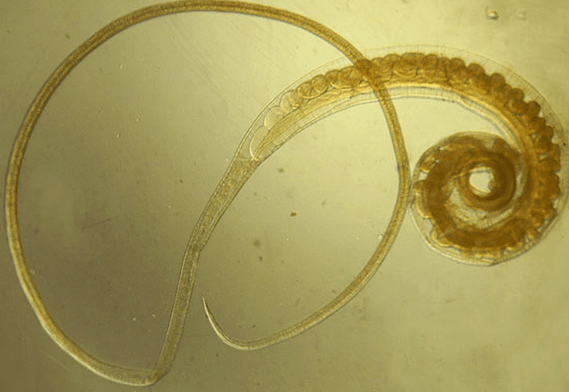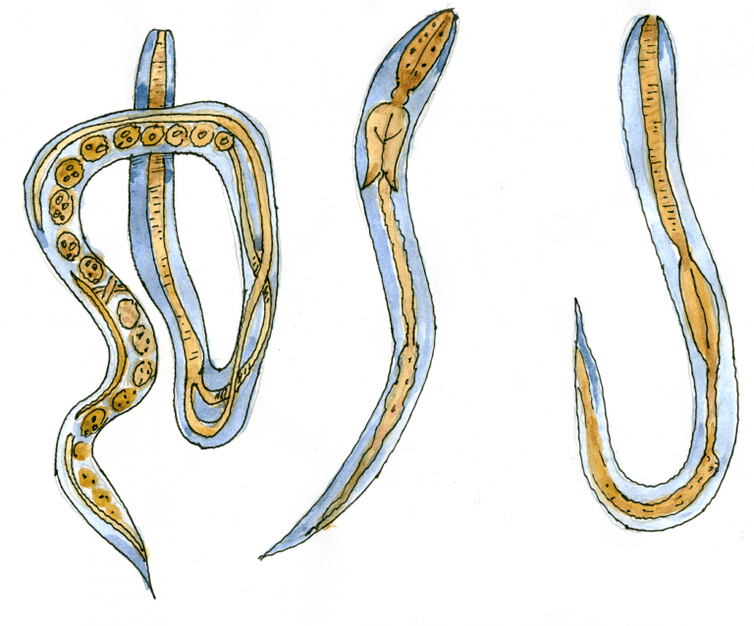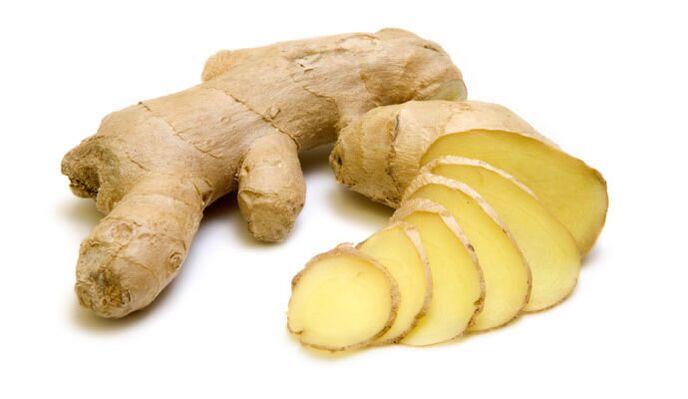Helminthosis is the most common disease on the planet.The parasites also lived before our existence and easily adapted to any climate change.
Some parasites in the human body have been adjacent to us throughout their lives and do not cause major health problems.But most species destroy the host body and cause different pathologies.
The risk of helminthiasis for humans
Parasitic agents multiply and live in the host body, causing significant changes in the body.This leads to the development of chronic diseases that are repeated continuously.

Localization of parasites can be in any part of the human body, but most often poisons are placed in organs:
- Gastrointestinal tract
- To the knots,
- In the muscles,
- In the liver and kidneys,
- In the organs of vision,
- In the lungs,
- Blood system.
Most types of helminths prefer to live in the gut, but with acute occupation, parasites are forced to migrate.Moving around the body, the parasites damage the organs found in their way.Migration can provoke improper treatment with popular methods.
Home methods are based on eating bitter plants and substances that are not for the taste of worms.The simplest is sent from the intestines in search of a more suitable environment for their lives.
The body of a sick person is more susceptible to various diseases, the immune system loses its functionality. An infected person is more likely to suffer from viral and infectious diseases.
The human body reacts acutely to the remains of the vital activity of parasites.The victim has symptoms of intoxication, an allergic reaction worsens.The processes that occur in the body after the infection are not a quick nature, and a person may not notice a parasitic agent for years.
Types of Helminths
The parasites that cause a person's health problems are divided into three groups:
- The simplest or protozoal parasites.This group includes toxoplasmosis, giardia, trichomonade.The protozoa is placed within the human cells and, by multiplying it, destroys it.Family and sexual transmission method.
- Helminths - worms or larvae that are placed within the human body.Among the most common differences: Bull tapeworm, pinworms, toxocars, ascarides, pinworms.Transmission methods: family, through insects, animals or filthy land.
- Ectoparasites - live outside the human body: ticks, lice, liqueur.The main source of nutrition is human blood.Wounds appear on the skin, bite itching and hurt.Risk in various infections that they spread: typhoid, encephalitis.
The most difficult to treat and the diagnosis is Helminths infection.It is important to know the signs of parasites in your body and to know their main types.
nematodes
In another way, nematodes are called round worms.He got his name because of the shape of the body.There are more than 45 types of nematodes within a person.The parasite is easily spread through personal hygiene and vegetable or unwashed fruits.The size of a round worm, depending on the variety, starts from a few millimeters and ends with tens of centimeters.

Among the most common round worms are distinguished:
- Tips - the main place of habitat - a person's intestines, worm length up to 1 cm.When infected, a person manifests symptoms: gastrointestinal tract violation, exhaustion, anemia, sleep disorder.
- Ascarides - the length of the worm reaches 30 cm, is able to migrate and placed in different parts of the body.When infected, a person manifests symptoms: an allergic reaction, anemia, asthma, dermatitis worsen.Once in the eye or liver, ascarides can lead to serious illness.
- Trichinella is a worm size only 2-3 mm, the main habitat is the intestines.When infected, it causes the following complications in one person: swelling, an allergic reaction, digestive tract violation, fever.
- Vlashev - lives in the gastrointestinal tract, the size of an individual grown up to 4.5 cm.In one person, the parasite causes: anemia, weakness, body poisoning.
The severity of the disease is associated with the number of parasitic agents in the body, their species and localization.
trematodes
Tremontodes have a flat body.All types of trematodes have absorption cups with which they are fixed to the walls of the internal organs.Blood parasites feed useful substances and other secrets.In the human body, only adults parasitize.
useful substances and other secrets.In the human body, only adults parasitize.
Before a person's infection, the trematode passes an intermediate phase of his life in the body of another owner: in fish, animals, insects.The human body most often enters along with poorly treated foods.
Among the usual species, trematodes are distinguished:
- Opistorch or Bacon Feline - the worm body has a length of only 1-2 cm, main localization: pancreatic ducts, gall bladder and liver.A person causes disease: gastritis, ulcer, cholecystitis, pancreatitis.Transmitted from animals to humans.Due to localization in countries with difficulty, the parasite is difficult to diagnose.
- Strongigiloid or eating the intestine - small flat worm, up to 2 mm long.Put in the digestive tract.After infection, a person manifests pathology: anemia, asthma, bronchitis, asthenia, infertility.
All types of trematodes migrate easily throughout the body, cause mechanical damage to a person's internal organs.
Cestode
The parasitic strip worm, which is placed in a person's gastrointestinal tract.The length of the cestodes reaches a few tens of meters.A person gets from an intermediate host - a big animal: a cow, a horse.The larvae fall into the human body from the meat of poorly fried animals, which a person eats for food.
Among the most common types of strip worms distinguishes:
- Wide tape - lives in the thin intestinal part.In length can reach 3-5 m.In humans, it causes disease: anemia, intestinal obstacle, digestive disorders.
- Pork chain - placed in a person's intestines.In length, the strip worm reaches 7-8 m.The patient manifests: obstruction of esophagus, intoxication, cystsiskosis.
- Gull Taper is the largest of human parasites.In length, the worm can reach 18 m.A person has intestinal obstacles, excitement, allergies.
Larvae of all types of cestoda are able to damage the internal organs and provoke the appearance of a tumor.
The sources of infection
The main type of transmission of helminthiasis is the family.Among the possible sources of infection, they are distinguished:
- Personal hygiene things: towel, toothbrush, comb, bed,
- Dirty hands,
- Toilets in public places,
- Insufficiently processed meat or fish,
- Vegetables, berries and unwashed fruits,
- Unforgettable water from a crane or an open source,
- Raw animal.

Some types of parasites are sexually transmitted.These include trichomoniasis.
To prevent infection, it is necessary to observe personal hygiene and wash your hands with soap several times a day.In the absence of water and soap, it is recommended to treat your hands with an antiseptic solution.
Vegetables and fruits before meals are washed in running water.Apples, pears and other fruits used with peel, it is recommended to rinse with a special tool or home soap.At home animals are treated by helminths every 6 months using special medicines.Boil water before drinking, a small child is given a bottle special.
Once a week, the children are cut with nails.Pilgrims under the nails are cleaned daily.It is easier to clean the nails with an old toothbrush or a special file.
Symptoms of helminthiasis
The clinic of damage to the internal organs varies depending on the localization of the parasites in the body.But there are general symptoms that appear when infected with any type of agent.
intoxication
By parasitizing in the human body, Helmint leaves products of her life.The patient receives poisoning, which is manifested by the following symptoms:
- Headache,
- Nausea
- Vulnerability
- A decrease in appetite,
- Nervousness.
allergy
An allergic reaction manifests itself in the initial stage in the form of a rash, which is difficult to treat.After treatment, the rash disappears, but after a certain time it manifests itself again.In young children, diathesis rashes are observed on the cheek, neck, groin and armpit.Skin rashes are explained by toxins that distinguish poisons.
In allergies or asthmatic, parasites can cause swelling of the mucosa, bronchial spasms, asthma attacks.

Change
When infected with helminths, a person may lose weight.Loss of body weight is associated with the struggle for nutrients consumed by the parasite.But small parasitic agents can provoke weight gain.Once it is in the bloodstream, the breakdown of one -way bloodstream and metabolism in the body slows down.In one person, swelling manifests, weight is increasing.
HYPERTHERMIA
In contrast to the backdrop of secondary pathologies in a patient with helminthiasis, the temperature rises to 37.5 degrees periodically.The temperature rises for no apparent reason and is associated with weakness, general mistreatment.A person experiences fatigue, he wants to sleep all the time.The symptom passes independently, also suddenly as it appeared.
Disorders in the digestive tract
Disordishes digestive disorders are associated with intoxication of the body and the development of parasites in the intestines. Symptoms resemble dysbiosis, and incorrect treatment is prescribed to the patient.
In case of digestive tract violation, symptoms are observed:
- Stomach swelling,
- Unstable chair (diarrhea and constipation),
- Uth ,,
- Stomach pain.
Anemia
A parasitic agent feeds on nutrients aimed at the owner.A person does not receive the required number of vitamins and minerals.The iron indicator in the blood falls.The patient experiences weakness, general mistreatment.The skin and mucous membranes are pale.The poor condition is associated with frequent dizziness and dimming.
When any of these symptoms appear, it is worth contacting specialists and going through a complete body examination for helminths.
Diagnosis of the disease
Before describing treatment, it is necessary to determine what type of parasite is infected by the body and where the worm is located.Most medicines have been developed to combat a specific type of helminth.There are universal medicines, but their effectiveness is lower, and they have more side effects.

The type of pathogen is determined by the following types of exams:
- Fece analysis for parasite eggs,
- Overall blood test,
- Blood immunophaf test,
- Stain
- Analysis of the secret of the duodenum,
- Ultrasound of the gastrointestinal tract and liver,
- Tomography.
Tomography is described if the rest of the research methods do not make it possible to present a complete picture of the infection.
With a negative result, some research methods are described again.The easiest way to determine the presence of an adult parasite in the human body.During the incubation period, the tests show a negative result.
When diagnosing the parasite, the doctor will immediately prescribe appropriate treatment.
Helminthosis therapy
The treatment of helminthiasis is very stage and will take time from the patient.In the first phase, the body should be prepared and cleaned of accumulated toxins.The patient is prescribed sorbent.Cleaning the body of toxins lasts at least five days.
In the second phase, anti -masticic agents are prescribed to the patient.It is better if the medicine is selected individually for a certain type of parasite.
The phase of the fire parasites is performed in two courses.The first course will kill adults of helminths in the human body.After 10-14 days, adult worms will be replaced by new ones that will open from the layered eggs.The second course will kill new individuals.
The most important is restoration - the third phase of treatment.In the third stage, the digestive tract, liver and immune system are reset.The patient is prescribed a course of medicines for sorbing.After taking sorbents, it is recommended to take medicines that help in the digestive tract.Drugs are food enzymes and help absorb food.The dose is individually selected depending on the weight of the patient and secondary diseases.
Polyvitamins are added at the same time.As well as medicines to maintain immunity.
Each therapy is performed under the supervision of a specialist.If helminthiasis is caused by infection with plates or tape parasites, then the therapy is performed in the hospital.Removing parasites of some species requires surgical intervention.

Popular methods of treatment
All anthelmintic drugs are toxic and contraindicated for pregnant women.You can expel parasites with popular methods that have no side effects.
Plants have a pronounced anti -anthillus: tansy, wormwood, linen, cloves, ginger.
A popular herb based preparation is a triple herbal collection.The medicine is simply made at home: mixed in equal portions (1 teaspoon) Tansy, wormwood, 10 pcs.Cloves.Ingredients are used dry.Everything is ground and mixed.1 teaspoon of the product is taken daily, washed with a large amount of water.
Effective enemas from the infusion of wormwood and tansy.Enems are performed within 10 days before bedtime.At the same time, 3 tablespoons of infusion are taken inside.
The fresh ginger helps to expel the parasites.The root is crushed and consumed 1 teaspoon three times a day.To improve the taste of ginger, 1 teaspoon of honey and a few drops of lemon juice are added to the mixture.
Pumpkin helps to run the parasites.Its taste is nice, but I don't like helminths.In therapy, pumpkin oil, seed infusion and pumpkin pulp are used.
A triple oil or home -made squash is drunk as a preventative measure every six months.
During treatment, the patient adheres to a certain food: from the diet they are excluded: sugar, flour and products containing yeast, milk, butter.The main part of the menu is made up of vegetables and dairy products.
Any kind of parasites strike the body and, after the expulsion of helminths, continue treatment of secondary pathologies.
Each treatment should be checked by a specialist who will determine the type of helminth and choose an effective treatment for treatment.






































